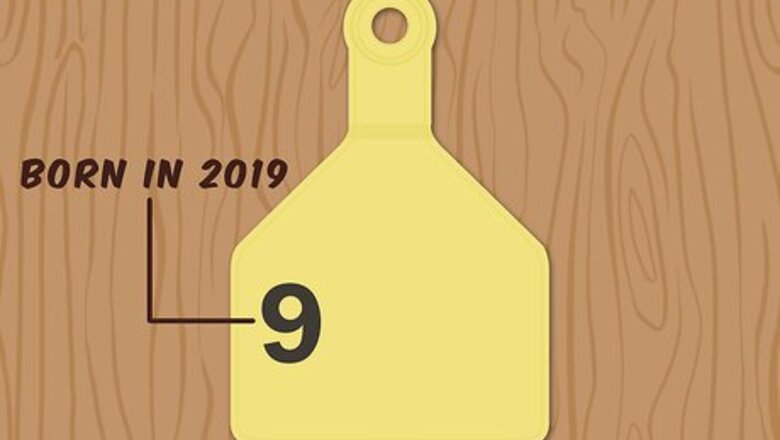
views
Starting with the Year of Birth
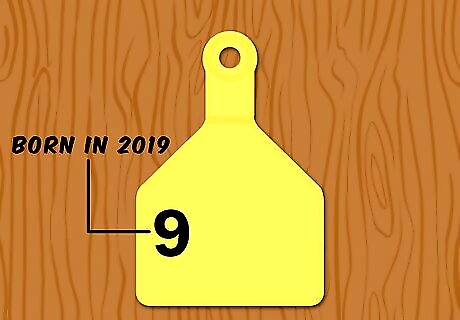
Write the last number of the cow's year of birth on the tag. For example, if the cow was born in 2018, the first number on the tag would be an 8. This allows you to tell how old a cow is by looking at their tag. Write the number the number boldly and clearly on the left side of the tag. This is particularly useful if you want to sell your cattle at a market, as potential buyers will be able to tell the age of a cow by simply looking at its ear tag. Use a black permanent marker to write the numbers.
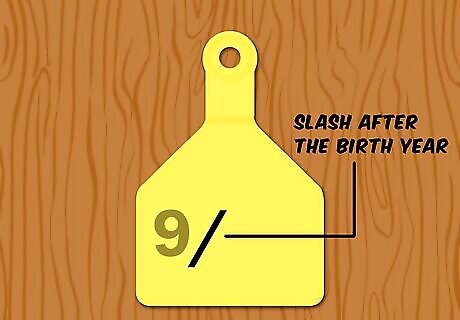
Include a slash after the birth year to make it easier to read. For example, if the cow was born in 2002, their number thus far would be 2/. This step is optional, but it does make it quicker to identify the cows birth year at a glance. Some farms use a dash instead of a slash.
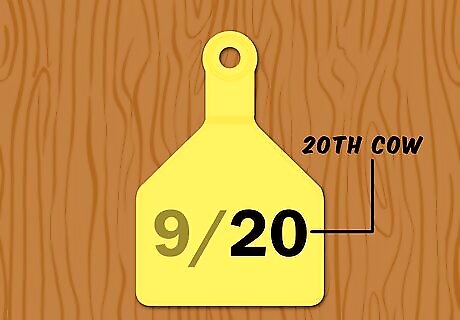
Add the calf’s birth number to the tag. Give each calf that is born in a calendar year a sequential number, starting from 1. Some cows will have the same birth number, but their overall ear tag numbers will be different because the first number will be unique to their date of birth. For example, you would give the 20th cow born in 2019 the number 9/20. Start the numbers again from 1 each year.
Using Consecutive Numbers
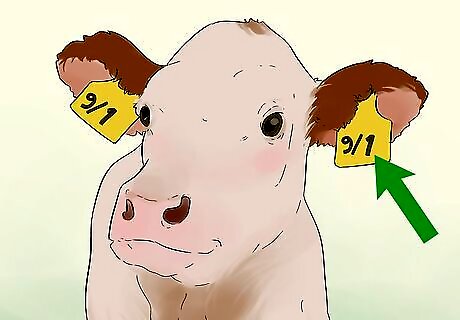
Number each cow in your herd, starting from 1. Number the cows in your existing herd and then give each new calf a sequential number. For example, your 102nd cow would have the number 102. Use placeholder 0’s before the number if the number is less than 100. For example, cow number 5 would have 005 written on its tag. Similarly, cow number 50, would have 050 on its tag. Write the numbers clearly so that they are easy to read.
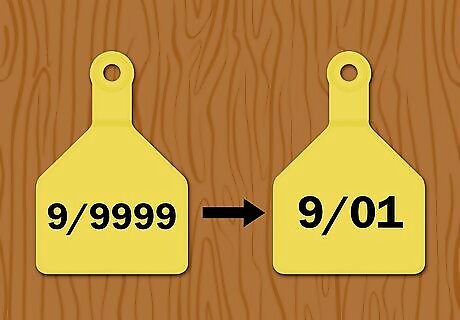
Restart the ear tag numbers from 1 once you reach 9999. Tags with too many digits are difficult to read. To avoid this problem, avoid numbers over 9999. If you have a very small herd of cows, consider restarting the tag numbers after 99.
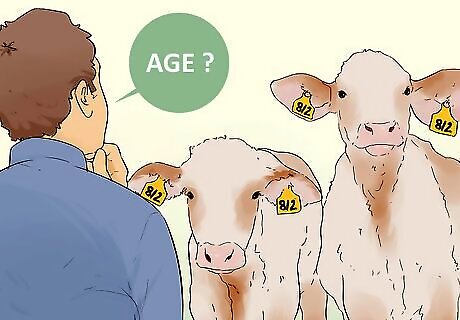
Distinguish between cows with the same number by guessing their age. Because this method requires you to reuse numbers, you can potentially end up with a calf and a cow with the same number. This is generally not a problem as it is unlikely to have more than 9999 cows in 1 season. This allows you to identify the older cow by its larger stature. For example, calf number 333 born in 2018 will be much larger than cow 333 born in 2008. If you have a very large farm, consider using a different numbering system to differentiate between the cows. This method doesn’t allow you to see what year each cow was born.
Using the Letter System
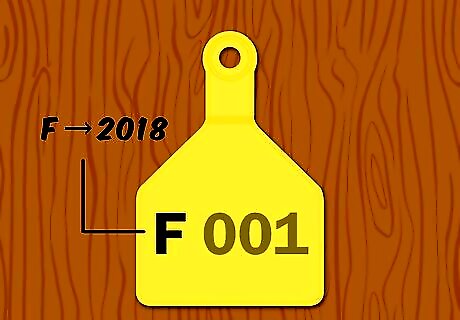
Check what letter to use for each birth year from your breeder's association. Different breed associations assign varying letters to different years. It is important to find out the correct letter to use so that potential buyers can identify what year your cow was born. Search online for a year letter codes chart for your breed if you aren’t able to contact your breeder’s association. For example, write an “F” at the beginning of the cow's ear tag to indicate that it was born in 2018.
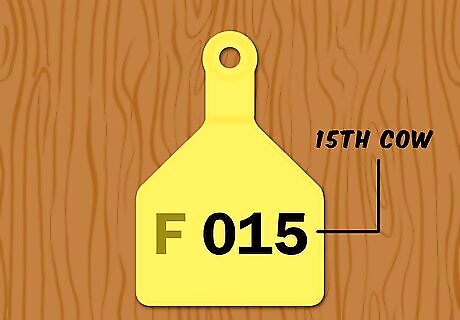
Add the cow's unique birth number. Each year, number the new calves sequentially, starting from 0. For example, the 15th cow born might have the number F15. Write the cows birth number after their birth date letter. If you are in England, G = 2019, H = 2020, I = 2021, J = 2022.
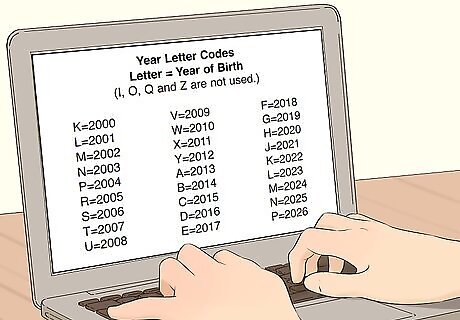
Keep a chart of the year letter codes for easy reference. It can take a while to memorise the different letters assigned to each year. Purchase a chart from your breeder's association or print one off from online to remind you of the correct codes. Over time, you will likely become familiar with all the letter codes; however, the chart will still be useful for new employees.
















Comments
0 comment